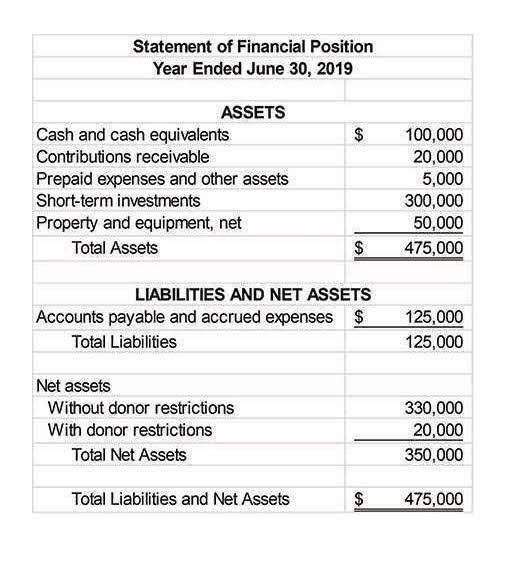outstanding checks definition and meaning

This documentation will come in handy if you need to prove to state regulators that you made reasonable attempts to complete the payment. If an outstanding check is cashed after you asked a bank to stop the payment, bookkeeping you will be responsible for proving that you took the necessary steps to complete the payment. If a check remains outstanding for an extended period, it may become stale-dated, and the bank may refuse to honor it. The payee should contact the issuer to request a new check if this occurs. When a business writes a check, it deducts the amount from the appropriate general ledger cash account. If the funds have not been withdrawn or cashed by the payee, the company’s bank account will be overstated and have a larger balance than the general ledger entry.

Outstanding Deposits
- As long as you know not to spend money promised to someone else, avoiding expensive consequences such as overdrafts or insufficient funds fees is possible.
- Additionally, banks must comply with anti-money laundering (AML) regulations, which may require additional scrutiny of long-outstanding checks.
- However, it is ultimately up to the receiving bank whether they will cash (or deposit) a check or not.
- It may simply be that checks are not a good payment method for the payee.
- Imagine a scenario where Sarah, a small business owner, writes a check for $800 to pay for monthly rent on her office space.
- These checks, written but not yet cashed or cleared by the bank, can create account balance discrepancies and complicate financial reconciliations if not properly addressed.
- The issuer has accounted for the reduction in their bank account balance, but the actual decrease will not occur until the recipient cashes the check and the bank clears it.
Additionally, these tools can generate reports that provide insights into the age and volume of outstanding checks, which can be indicative of broader financial management issues. It’s important to be aware of outstanding checks and to resolve them quickly. By keeping track of every check you write outstanding checks and regularly cross-checking your records with your bank statement, you can avoid unnecessary delays, fees, and other budget pitfalls. A well-managed bank account is a stepping stone toward a secure financial future. To mitigate risks, it’s crucial to reconcile your accounts frequently to identify outstanding checks. If a check remains outstanding for an extended period, consider contacting the payee to remind them about the pending transaction.
- Outstanding checks that remain so for a long period of time are known as stale checks.
- It may be necessary to issue a new check without getting the old check back if the original check was lost or destroyed.
- Otherwise, in rare cases, you might wind up with both the old (outstanding) and the new check being cashed, which would leave you with a financial loss.
- This typically occurs after a few years, but timetables vary from state to state.
- For issuers, poor management of these checks can lead to financial and legal consequences.
- They meticulously scrutinize these items during the year-end audit to ensure the company’s financial statements accurately reflect its financial health.
AccountingTools
Writing checks makes it possible for organizations and individuals to make payments without requiring instantaneous cash or electronic transactions to be completed. Checks that linger only buy the company more time to gather up enough resources for payment to clear if more time is needed. From July 25 to August 1, the $500 check is considered an “outstanding check” from the perspective of BestBooks Store.

A Walkthrough of the Escheatment Process for Outstanding Checks

An outstanding check is any check written on a bank account that hasn’t yet been cashed or deposited and cleared. An outstanding check is a check payment that has been recorded by the issuing entity, but which has not yet cleared its bank account as a deduction from its cash Bookkeeping for Etsy Sellers balance. The concept is used in the derivation of the month-end bank reconciliation. To reconcile outstanding checks with your bank statement, compare the checks issued but not yet cleared with the information provided on the statement, ensuring that both records align.

- An outstanding check is a check payment that has been recorded by the issuing entity, but which has not yet cleared its bank account as a deduction from its cash balance.
- Holding on to checks for a long time also increases the likelihood that they will get lost or destroyed before they are cashed or deposited.
- On July 31, 2023, BestBooks Store receives its bank statement, which shows a balance that is $500 higher than its own records, since the $500 check has not yet cleared.
- ✝ To check the rates and terms you may qualify for, SoFi conducts a soft credit pull that will not affect your credit score.
- Additionally, these tools can generate reports that provide insights into the age and volume of outstanding checks, which can be indicative of broader financial management issues.
Some businesses print “Void after 90 days” on their checks to encourage recipients to deposit checks more promptly. Most banks will continue to honor checks for the full 180 days, but that isn’t guaranteed. To prevent problems, you should cash or deposit a check promptly after receiving it.

For accountants, it represents a meticulous task that requires attention to detail and an understanding of the temporal nature of financial transactions. Meanwhile, auditors view outstanding checks as potential red flags that could indicate deeper issues within the company’s financial processes. Advanced accounting software can streamline the recognition of outstanding checks. Programs like QuickBooks, Xero, and Sage offer features that automatically match issued checks with those cleared by the bank, flagging any remaining as outstanding. This automation aids in reducing human error and ensures a more efficient reconciliation process.
Outstanding checks, those issued by a company but not yet cleared by the bank, represent a peculiar challenge in financial reporting. They straddle the line between the company’s internal records and the bank’s records, often leading to discrepancies that can obscure the true financial position. From the perspective of an accountant, these checks are a reduction in the cash balance of the company’s books, yet they do not affect the bank balance until cashed. This timing difference is critical as it can significantly impact the cash flow statement and the balance sheet.
Stale-dated or void checks present unique challenges in financial management. A check becomes stale-dated when uncashed for an extended period, often six months, depending on state laws or bank policies. Banks may refuse to honor such checks, disrupting financial planning and cash flow management. Businesses need clear policies for tracking outstanding checks to mitigate these risks. Outstanding checks represent a liability for the payor since they have not yet been processed by their bank. If the account balance is insufficient when the check is eventually cashed, the payor may face overdraft fees.















